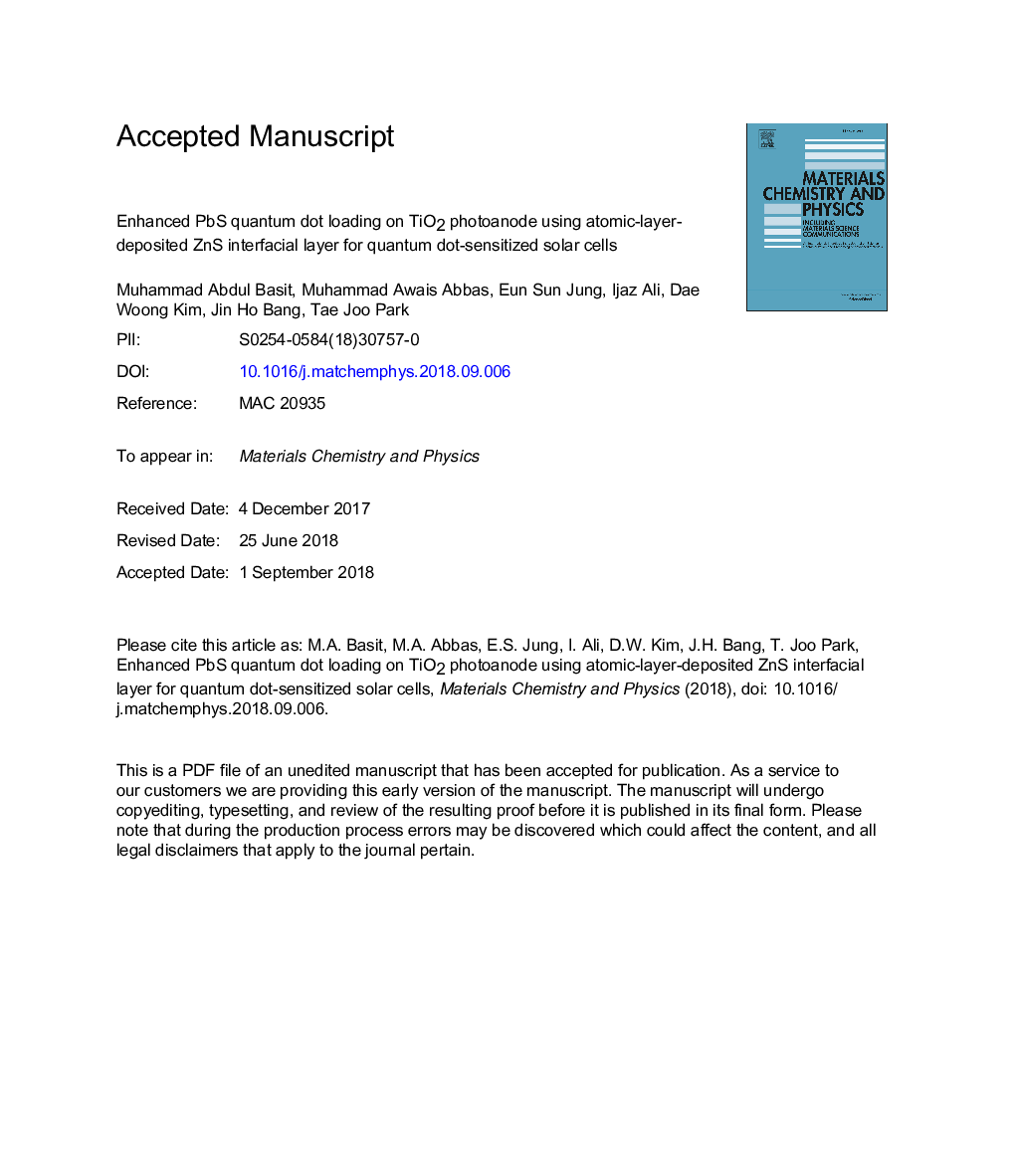| Article ID | Journal | Published Year | Pages | File Type |
|---|---|---|---|---|
| 10135567 | Materials Chemistry and Physics | 2018 | 20 Pages |
Abstract
Ultrathin and conformal ZnS film grown by atomic layer deposition was employed in quantum dot-sensitized solar cells (QDSSCs) as an interfacial layer (IL) between mesoporous TiO2 photoanode and successive ionic layer adsorption and reaction (SILAR)-grown PbS QDs. ZnS IL provided more nucleation sites compared to a bare TiO2 photoanode, which enhanced PbS QDs loading remarkably. As a result, the optical absorbance and thus photocurrent density considerably increased. The power conversion efficiency of QDSSCs increased from 3.4% to 4% by introducing the ZnS IL. However, the β-recombination model obtained from electrochemical impedance spectroscopy revealed the evolution of charge carrier recombination inside QDs as a consequence of enhanced QD loading, which partly dilutes this benefit.
Related Topics
Physical Sciences and Engineering
Materials Science
Electronic, Optical and Magnetic Materials
Authors
Muhammad Abdul Basit, Muhammad Awais Abbas, Eun Sun Jung, Ijaz Ali, Dae Woong Kim, Jin Ho Bang, Tae Joo Park,
